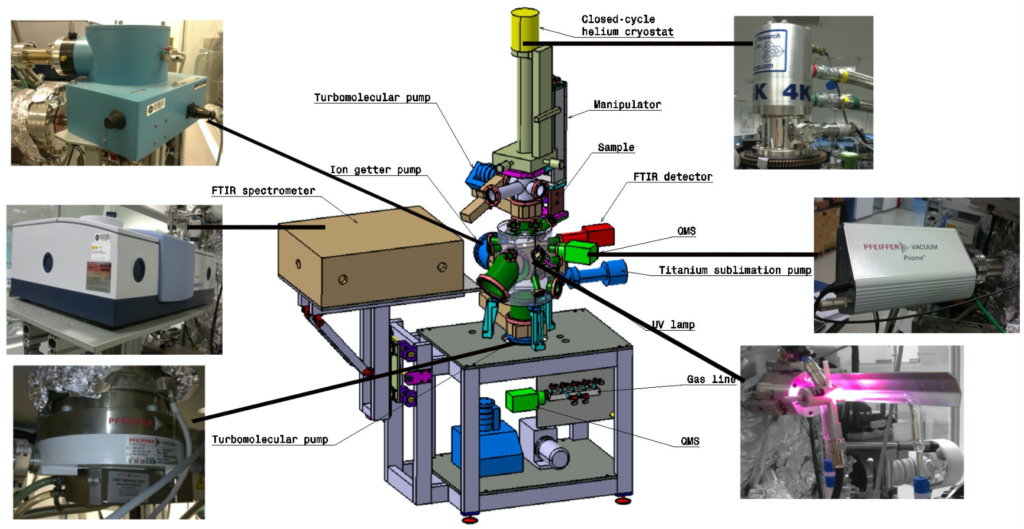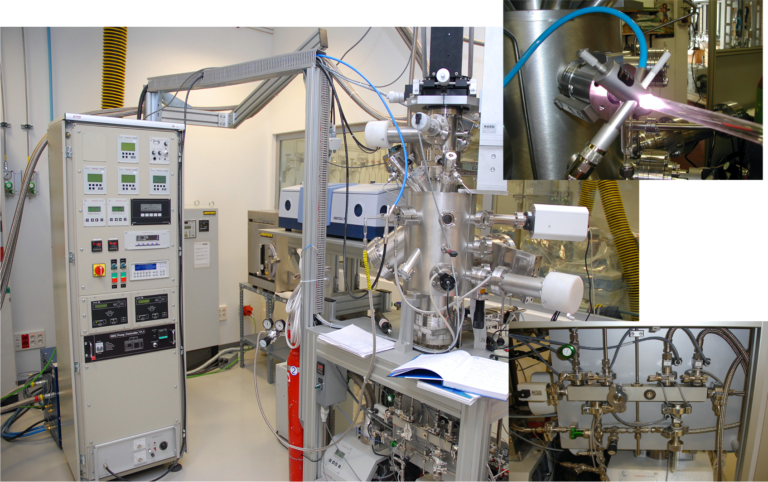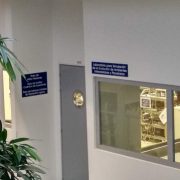Principal investigator: Guillermo Muñoz Caro
Experimental Astrochemistry has been carried out since 2008 in the LSAIP laboratory at CAB, mainly using the ultra-high vacuum chamber ISAC (InterStellar Astrochemistry Chamber). Under conditions analogous to the interior of a dense interstellar cloud, where young stars are born, the formation of ice mantles at 8 Kelvin on interstellar dust grains is recreated. The water-dominated ice contains other simple molecules: CO, CO2, CH3OH, CH4, NH3, etc. Under the effect of UV radiation, X-rays or cosmic rays, we generate radicals and reactive molecules in the ice, which continue to evolve during heating from 8 Kelvin to room temperature.
The end result is the formation of organic molecules of astrobiological interest: amino acids, nitrogen heterocycles, sugars, and so on. Some of these molecules were identified on the surface of comet 67P thanks to Rosetta. The contribution of cometary and asteroidal matter to the early Earth may have contributed significantly to the emergence of life.
Our work allows us to interpret data from cometary missions such as ESA-Rosetta, in which we participate, and observations of ices in interstellar and circumstellar environments, such as those soon to be made with the JWST telescope. It also allows us to know which molecules desorb from the ice mantles into the gas phase and can be observed more easily.
ISAC = InterStellar Astrochemistry Chamber










